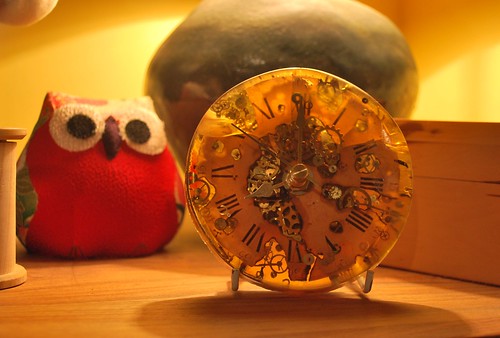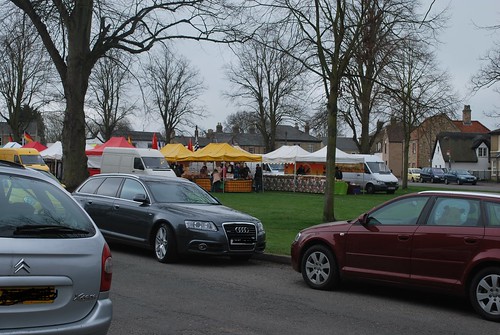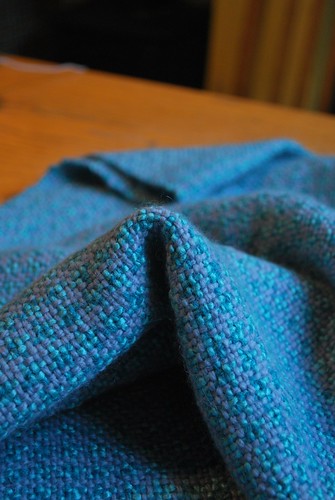I've always knitted - well, since I was 11 or so; and that's been a constant for the last 34 years. I'm not sure I remember a time when there wasn't a knitting project of some sort on the go - it just wouldn't be right.
Again, since I was 11 or so, I've been making my own clothes on a semi-regular basis. These days, it's mainly pyjama trousers (because there's more nice fabric out there than there are people producing affordable cute PJ bottoms) and knitting bags, but I've made more elaborate things in the past including my wedding dress. As I've blogged before, I love my sewing machine.
About 18 years ago I joined rec.crafts.textiles.needlecraft - and that was an eye-opener; there was So Much Stuff out there. I found myself able to order threads and fabric from the US I'd never even dreamed of, and patterns, too. This is Summer Sampler, by Marilyn Leavitt-Imblum (a woman whose rightful enforcement of copyright makes Alice Starmore look like a total slacker).
I also love the Hardanger embroidery which has developed from traditional Norwegian embroidery. Scandinavian Americans have taken it from skirt and apron edgings into a more decorative sphere and included modern materials like space-dyed threads. This piece won Best in Show at my village show in 2005 or so - the first non-food exhibit to have done so, so yes, I was chuffed about that...
In the mid-90s, I was getting completely hacked off with my job, and signed up for a City and Guilds qualification in Creative Embroidery, which was an eye-opener on many levels. At the time, the tutor was recovering from a couple of serious illnesses; but the design substitute was very inspiring. We learned to dye, to make felt (this was made at Wingham with their felting machine),
...to stitch, to design... It gave me confidence in so many ways.
This is part of a 180cm by 60cm opera stole I made; based on the work of Gustav Klimt.
This is a close-up of a box-top I made while part of the Fibrefusion group. Work mine, photo (c) Kevin Mead. For info on Kevin's lovely textile photography, contact Art Van Go.
Most recently, I've got into weaving, which I love. Before that, I also started spinning.... but maybe more of both of those later...
And yup; there's something missing here. I think we were meant to be talking about a balance between knitting and crochet... I love what you get out of crochet. Looking around my living room, I have two pillow-sized (as in UK bed-type-pillows) cushions on the sofa, and a throw over both chairs, all made by Wibbo who literally wrote the book when it comes to crochet. I also love what someone like Amanda from the Natural Dye Studio can do with crochet patterns. - you can't get that effect with knitting.
Me, personally ... well, I've made a couple of pot-holders and frilly scarves; but fundamentally, I can't quite work out what to do with a crochet hook. I'm left-handed but do a lot of things right-handed (including knitting, using scissors and manipulating a computer mouse), and am in a perpetual state of indecision as to which hand to use to hold a hook... I've had teaching from the best (along with a huge degree of hilarity as to my clumsiness)... One of these days, maybe. Until then, I just live in awe.
This is me, signing off from the blog week. It's been fun.























